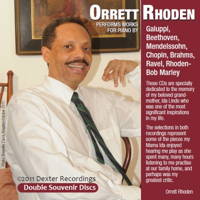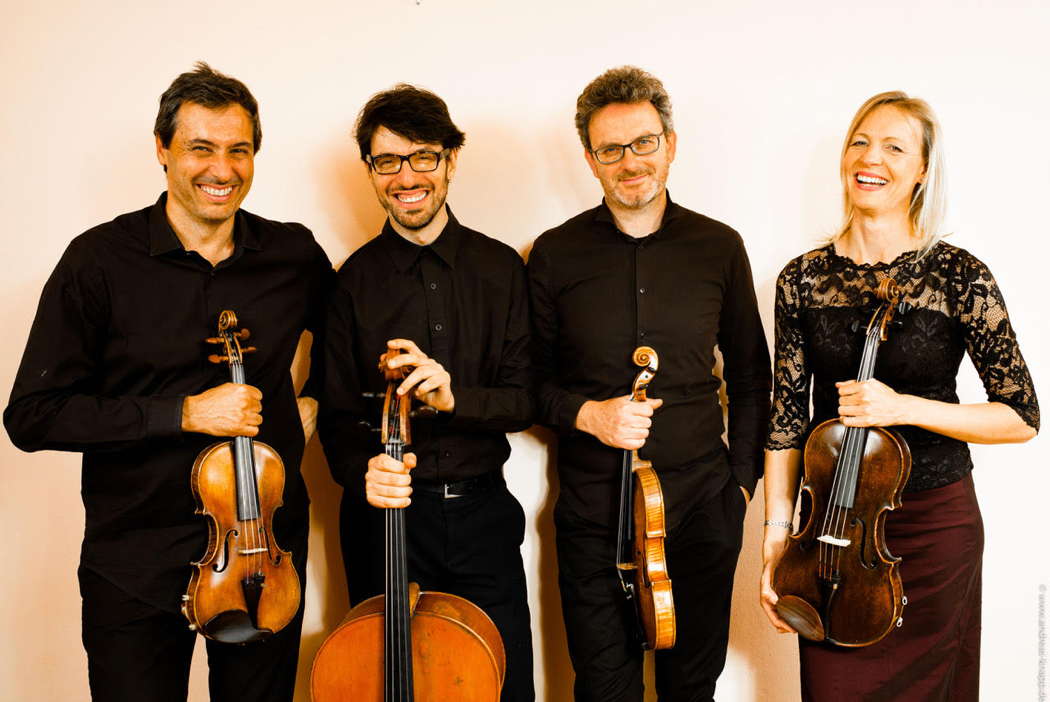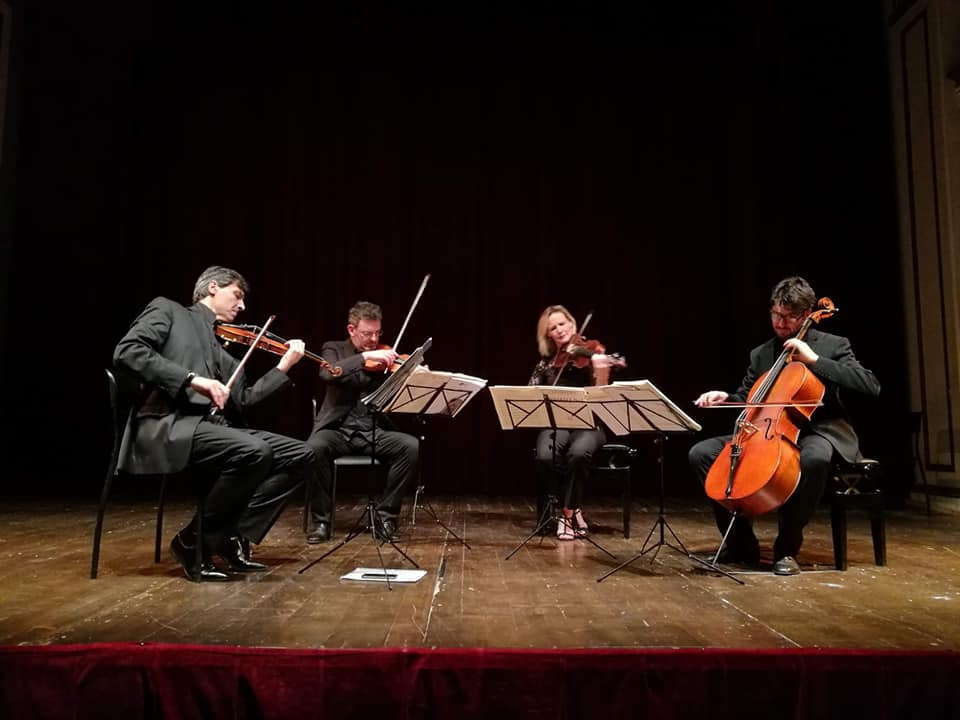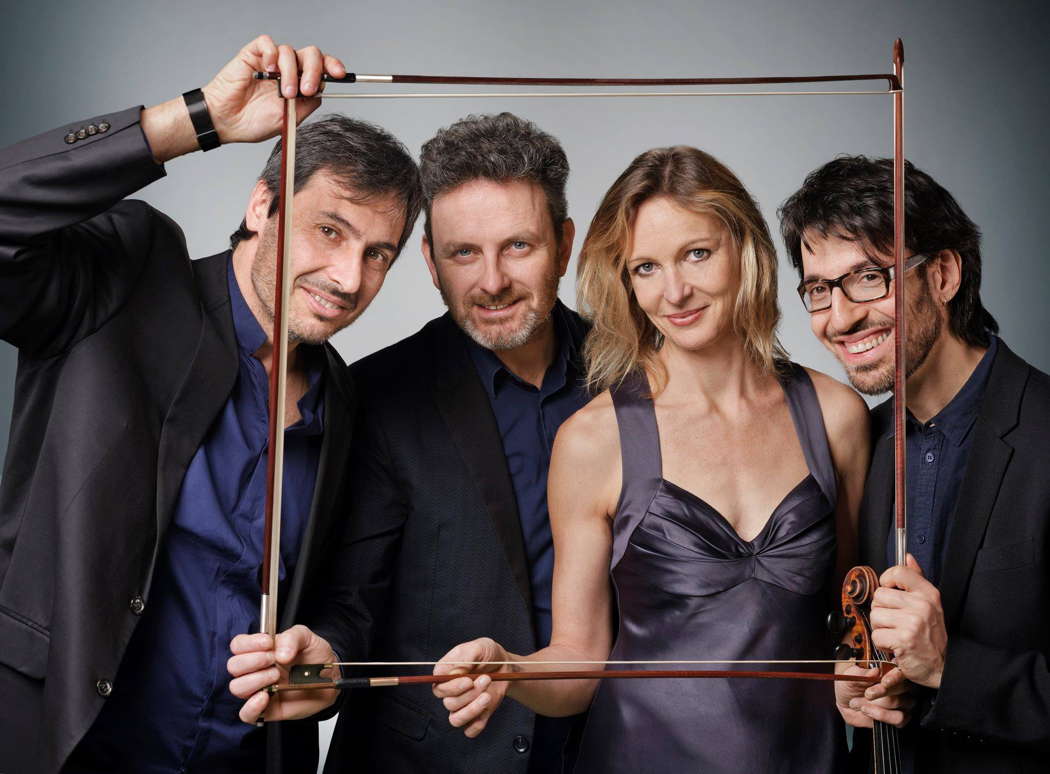 SPONSORED: CD Spotlight. Most Remarkable - Jamaican pianist Orrett Rhoden, heard by Bill Newman.
SPONSORED: CD Spotlight. Most Remarkable - Jamaican pianist Orrett Rhoden, heard by Bill Newman.
All sponsored features >>
- Gray Lamont Kennaway
- Jacob Avshalomov
- George William John Benjamin
- Iyad Sughayer
- Anshel Brusilow
- Martha Graham
- BBC National Orchestra of Wales
- Roger Sessions
 DISCUSSION: John Dante Prevedini leads a discussion about Composers, individuals or collective?, including contributions from David Arditti, Halida Dinova, Robert McCarney and Jane Stanley.
DISCUSSION: John Dante Prevedini leads a discussion about Composers, individuals or collective?, including contributions from David Arditti, Halida Dinova, Robert McCarney and Jane Stanley.
Precious Testimony
GIUSEPPE PENNISI listens to the complete string quartets of Dmitri Shostakovich
It is the third appointment of a vast project that the Accademia Filarmonica Romana has articulated, over three 'seasons', the complete fifteen string quartets by Dmitri Shostakovich (1906-1975). The project was entrusted to Quartetto Prometeo – Giulio Rovighi, first violin, Aldo Campagnari, second violin, Danusha Waskiewicz, viola and Francesco Dillon, cello. Twice winners of the Bärenreiter Special Prize at the ARD Competition in Munich, and Silver Lion at the 2012 Venice Biennale, the Prometeo Quartet is one of the most accredited ensembles on the international music scene and is facing for the first time the Russian composer's entire output of quartets.

Quartetto Prometeo - from left to right: Giulio Rovighi, violin 1, Francesco Dillon, cello, Aldo Campagnari, violin 2 and Danusha Waskiewicz, viola
As pointed out in this magazine on 7 May 2022, on the occasion of the second concert of this complete cycle, Dmitri Shostakovich wrote fifteen symphonies and fifteen string quartets. With any other composer, this numerical equivalence might reasonably seem at first glance a pure coincidence. However, Shostakovich liked anagrams and numerical games. Written between 1938 and 1974, the fifteen quartets span an important part of the history of the twentieth century that goes from the Second World War to the first signs of détente of the Cold War. Shostakovich's story and personal experience relive and intertwine in compositions that become precious testimony of a historical era and a particular musical feeling.
Following the chronological order of composition, the Prometeo Quartet performed the three Quartets of 1956-1960 on 26 January 2023. This was a difficult period for the private life and artistic experience of the composer. He had a brief marriage with Margarita Andreevna Kainova, concluded by a tormented divorce. His great friends Mstislav Rostropovich and Galina Vishnevskaya escaped abroad. He had difficulties with the upper echelons of the Soviet musical world, despite being a member of the Communist Party and having assignments and honors both in his homeland and in the rest of the world. These determinants aggravated the depressive tendencies of a shy and introverted composer; they are felt in the three quartets.
The Quartet No 6 in G major consists of four movements: Allegretto, Moderato con moto, Lento (attacca) and Lento - Allegretto. The first Allegretto movement creates a carefree mood using kindergarten melodies; in the reading of the Prometeo Quartet, under this apparent lightheartedness, there is a blanket of melancholy. The second movement is a cheerful circular dance in E flat major, the third movement a chaconne in B flat minor. The final movement leads into an Allegretto that shows the influence of both Alban Berg's Lyric Suite and Richard Strauss' Metamorphosen - a very clear sign of how, despite the restrictions due to the Cold War, the composer was fully familiar with international musical experiences. The Prometeo Quartet highlights the unique vertical appearance (like a chord) of the notes D, E-flat, C and B naturally played at the same time, repeated at the cadence at the end of each movement. Of great level was the cello pizzicato.
The short but very intense Quartet No 7 in F sharp minor was composed in 1960. At first glance, the Quartet has rather unusual characteristics: on the one hand its brevity contrasts with that grandiose sense of architecture that Shostakovich cultivated in chamber music too; on the other, the elements of lyricism that stand out in the central part (Lento) show a very strong lyrical vein. The recovery of the lyrical language takes place within a design that destines the piece to the almost autobiographical expression of a private situation. The quartet is dedicated to the memory of the musician's first wife, Nina Vasilyevna Varzar, who died in 1954. The demarcation between the three movements is very tenuous. Each movement is characterized by the appearance of a constant thematic element, a group of four notes corresponding to a transliteration of the initials of the composer's name, that is, D, E-flat, C and B. The formula appears in the initial Allegretto. The formula appears in the initial Allegretto and in the concluding Allegro, in which the musician takes up the opening passages en bloc, according to a solution typical of his mature style. The Prometeo Quartet's performance has made this work a real little gem.

Quartetto Prometeo in concert - from left to right: Giulio Rovighi, violin 1, Aldo Campagnari, violin 2, Danusha Waskiewicz, viola and Francesco Dillon, cello
Extended and wide, however, is the Quartet No 8 in C minor, one of the most performed of Shostakovich's chamber music cycle. According to the score, it is dedicated 'to the victims of fascism and war'; his son Maxim interprets this as a reference to the victims of all totalitarianism, while his daughter Galina claims that he had dedicated it to himself and that the published dedication was imposed by the Soviet authorities. Shostakovich's friend, Lev Lebedinsky, said that Shostakovich thought of the work as his epitaph and that, at the time, he intended to commit suicide.
The work was first presented in 1960 in Leningrad by the Beethoven Quartet. In the liner notes to the 1962 Borodin Quartet recording, music critic Erik Smith writes: 'The Borodin Quartet performed this work for the composer at his Moscow home, hoping for his criticism. However, Shostakovich, overwhelmed by this beautiful realization of his most personal feelings, plunged his head in his hands and wept. When they finished playing, the four musicians silently packed their instruments and left the room.'
The musicians of the Prometeo Quartet did not cry on 26 January, but offered an extremely compact and heartfelt performance - once again the pizzicato is important - of the five movements in which the piece is articulated. The work is full of quotations that the Prometeo Quartet has not failed to point out.

Quartetto Prometeo - from left to right: Giulio Rovighi, Aldo Campagnari, Danusha Waskiewicz and Francesco Dillon
The theater was full, and the concert was a great success. To the insistent requests for an encore, the quartet responded with a short flight to New York: David Long's WED.
Copyright © 28 January 2023
Giuseppe Pennisi,
Rome, Italy



